Lose 20 Pounds in 80 Days with a Vegetarian Diet
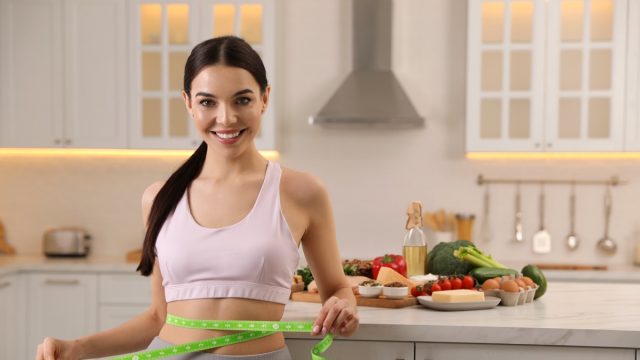
Losing 20 pounds in 80 days on a vegetarian diet is possible, provided it's done in a healthy, sustainable way. "While switching to a vegetarian diet can bring health benefits, including weight loss, it doesn't always," according to Harvard Health. "After all, cupcakes, cookies, and candy are technically vegetarian foods — but not necessarily ones that will improve your health or help you shed pounds. That said, a well-constructed and healthy plant-based vegetarian diet can help you lose weight over time, provided you make good food choices and reduce the number of calories you normally eat." Here's how to lose 20 pounds in 80 days while following a healthy, nutritious, and delicious vegetarian diet.
Watch the Carbs
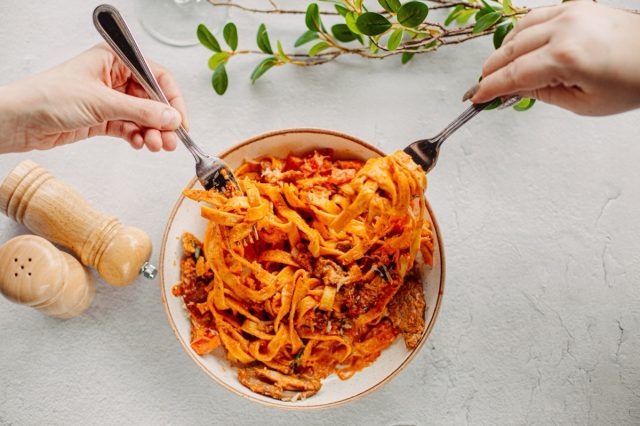
Be careful about consuming too many refined carbohydrates while on a vegetarian diet. "Vegetarian diets, although heart healthy, can make weight loss challenging due to their high percentage of calories from carbohydrates," registered dietitian Julia Zumpano, RD, tells the Cleveland Clinic. "It's OK to enjoy an occasional slice of pizza or bowl of pasta, but keep your portions down when you do and always include a protein source and plenty of vegetables to keep you full."
RELATED: I Dropped 6 Dress Sizes in a Year by Making These Simple Changes
Eat Whole Foods
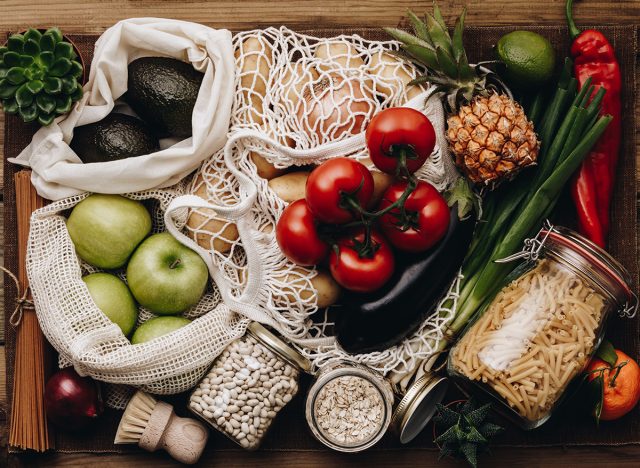
Eat whole foods as much as possible. "Fiber in whole foods keeps you feeling fuller, which might mean you eat less overall," dietician Victoria Taylor tells the British Heart Foundation. "Eating less could be helpful if you're trying to lose weight. Higher-fiber diets are also better for your blood pressure and cholesterol levels. Whole foods have no added saturated fat, salt or sugar. So eating lots of whole foods can help you lower the amount of these additives in your diet, which is good for your cholesterol levels, blood pressure, and weight."
Non-Starchy Vegetables
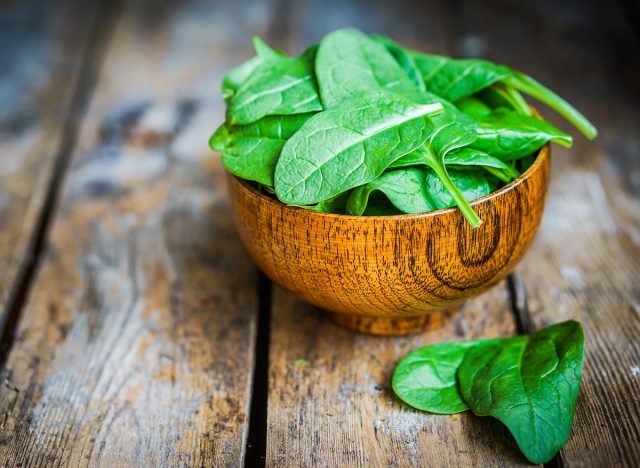
Opt for plenty of non-starchy vegetables such as spinach, arugula, cauliflower, and kale. While trying to lose weight on a vegetarian diet. "These types of vegetables are ideal for weight loss because when eaten in large quantities, they can help to activate the stretch receptors in your stomach that will tell your brain you're full," Dr. Shaun Kennedy, ND, tells Sonoran University of Health Sciences. "At the same time, they provide very few calories while providing a substantial amount of nutrition. The goal here is to feel full, receive appropriate amounts of nutrition, and cut the calorie count without feeling the hunger pangs typically associated with dieting."
RELATED: 15 High-Protein, Low-Carb Foods to Help You Lose Weight Now
Low-Sugar Fruit
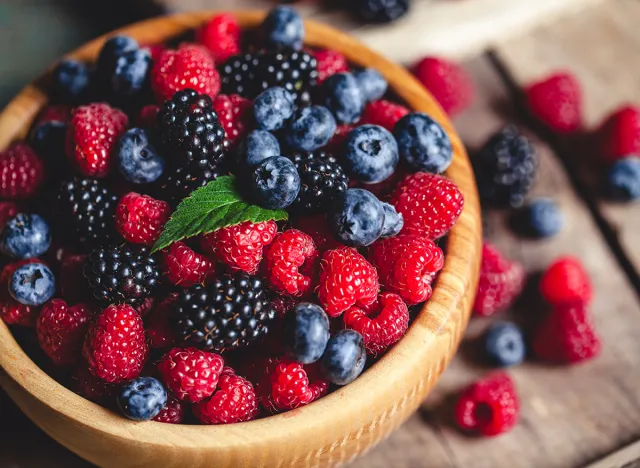
Be mindful of the type of fruit you enjoy while losing weight. "Again, the goal should be to maximize nutrition while limiting the amount of sugar (fructose)," Dr. Kennedy says. "Fruits that are higher in fiber have less readily available sugar and should be used preferentially (examples include green apples, grapefruit, and watermelon). Typically, you'll want to stick primarily with berries like blackberries, raspberries, and blueberries as you begin your weight loss journey until you can selectively add in other fruits."
Watch Your Calories
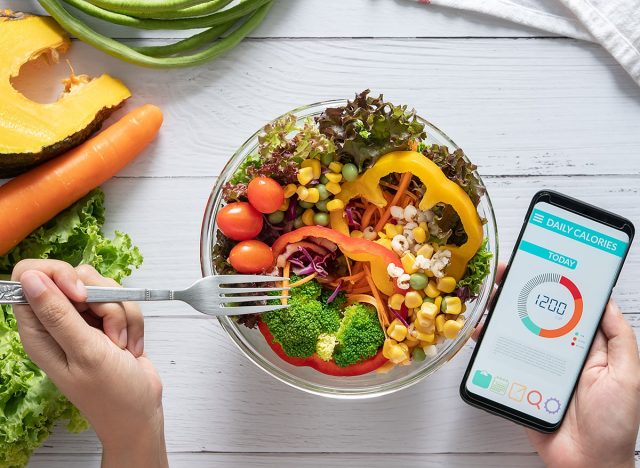
Plant-based protein is often higher-calorie than animal-based. "In order for a vegetarian to meet protein needs, these foods need to be eaten in larger volumes than meat," Zumpano says. "For example, a 4-ounce piece of lean meat provides about 200 calories and 28 grams of protein. To obtain that same amount of protein from beans, you would need to consume more than 2 cups of cooked beans, which provide close to 400 calories." Zumpano suggests treating the beans as both the carbs and the protein in a meal.
RELATED: 8 Golden Rules for Fat Loss Over 50
Get Moving

Regular movement is important for weight loss and overall wellbeing, no matter what diet you're on. "Regular exercise is one of the pillars of healthy living," Howard E. LeWine, MD, tells Harvard Health. "It improves cardiovascular health, lowers blood pressure, helps control body weight, and protects against a variety of diseases. But does it help to boost your immune system naturally and keep it healthy? Just like a healthy diet, exercise can contribute to general good health and therefore to a healthy immune system."
Get Good Sleep

Sleep is crucial to weight loss and health—the CDC recommends adults get at least 7 hours a night. "Sleep is essential to every process in the body, affecting our physical and mental functioning the next day, our ability to fight disease and develop immunity, and our metabolism and chronic disease risk," nutritional epidemiologist Dr. Erica Jansen tells the University of Michigan School of Public Health. "Sleep is truly interdisciplinary because it touches every aspect of health."
Watch the Added Sugars
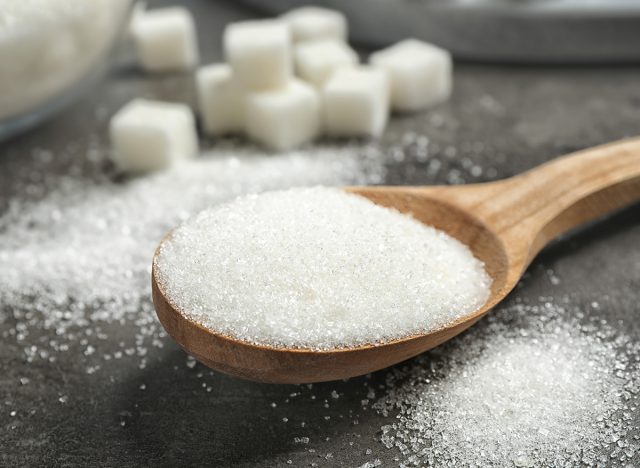
Avoid added sugars whenever possible. "Eating and drinking too many foods and beverages with added sugars makes it difficult to achieve a healthy eating pattern without taking in too many calories," says the Office of Disease Prevention and Health Promotion. "Added sugars contribute calories, but no essential nutrients."
RELATED: 10 Household Tasks to Shed Pounds in Your 50s
Cut Down on Alcohol

"If you are trying to lose weight, you can boost your efforts by cutting back on alcoholic drinks. Alcohol can cause weight gain in a couple of ways," according to Mount Sinai. "First, alcohol is high in calories. Some mixed drinks can contain as many calories as a meal, but without the nutrients. Second, you also may make poor food choices when you drink."
Watch the Processed Foods
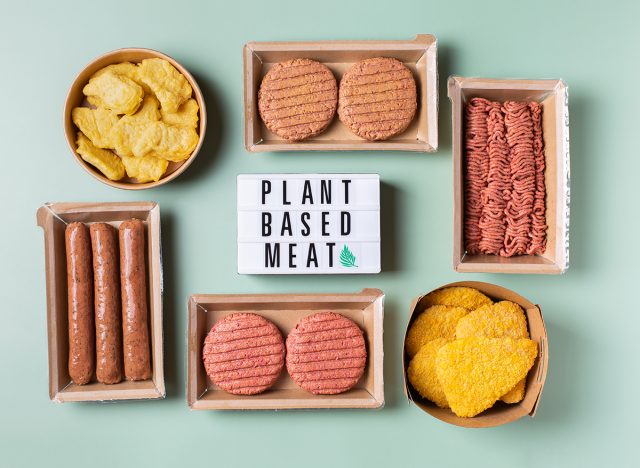
Vegetarian and vegan "plant-based meat" foods can be highly processed and filled with additives. "These foods are convenient and tasty," Zumpano says. "Logging your caloric intake can help you include these foods in moderation, while not exceeding your needs."
Eat Whole Fruits and Vegetables
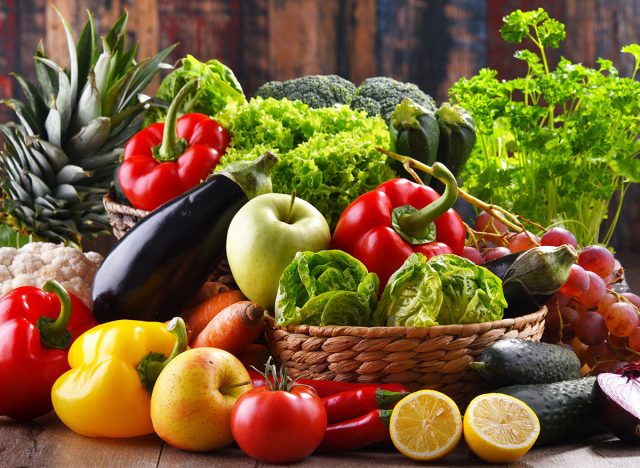
Eat your fruits and vegetables whole instead of juicing. "Ideally, you should have removed all refined carbohydrates and processed foods from the diet before considering limiting your fruit or vegetable intake," Dr. Kennedy says. "Lastly, try to eat the fruits and vegetables either raw or minimally steamed. Overcooking or juicing can make the sugar more available and can negatively impact the wonderful micronutrient and antioxidant properties."
RELATED:
Portion Size
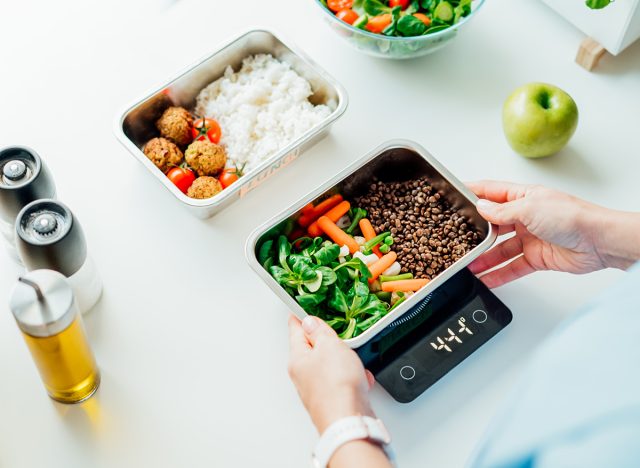
Weight loss comes down to burning off more than you're taking in, so keep that in mind no matter what diet you choose. "Beyond making sure you get the right combination of nutrients, also focus on portion size and calories if you are looking to lose weight," says Harvard Health. "Ultimately, keep in mind that a vegetarian diet, like any other, may help you lose weight, but it can also result in weight gain if you take in more calories than you burn off on a regular basis." And if you enjoyed this article, take advantage of these 15 Quick Ways to Lose Body Fat Percentage in a Week.




